|
When you think about animal shelters, who do you presume is the best person to lead the shelter in terms of overall qualifications? Compassion for animals is a given in terms of prerequisites, but what about education and skills? Are some people better suited to manage the challenges of animal shelters from budgeting to staffing to leadership to animal care to interacting with the public? The short answer is yes. I work in a city in which the shelter director, a city department head appointed by the mayor, is a veterinarian. She was appointed to that position by the prior mayor in the fall of 2002, more than twenty years ago. When I first interacted with her, I didn't think much about her role at the shelter beyond her qualifications as a veterinarian. I thought it must be a good thing to have someone specialized in animal care in charge of the department. I have been told numerous times by local elected officials over a period of two decades that they are certain the shelter director would not needlessly destroy animals. If animals die in the shelter, the logic goes, there must be no way to keep them alive. I was talking with a contact of mine recently about the most important element of the No Kill Equation, the absence of which causes all the other elements to be less effective: compassionate leadership. I was reminded of a blog written by Mike Fry of No Kill Learning many years ago and about which he spoke at our 2013 No Kill Huntsville public workshop at the downtown library: core competencies for animal shelter leadership. Mike has decades of experience in the animal shelter industry, but he also spent time working at the Center for Creative Leadership for Dr. Mike Lombardo and Bob Eichinger. Mike used scientific data about 67 leadership core competencies to apply that data to the animal shelter field. He surveyed dozens of people who were either successful shelter directors, board members who oversaw successful shelters, or other knowledgeable persons. Based on the feedback, he ranked the 67 competencies and listed the top 22 "must have" skills for animal shelter leadership. The 22 must have skills Mike ranked are:
As Mike wrote in his blog, many boards and municipal administrators select leaders using the wrong criteria and end up putting people in roles for which they are poorly suited. I could not agree more. I know some animal shelter directors with no advanced animal care skills who achieve wonderful results in their shelters and communities by balancing public safety with animal welfare to achieve tremendous life-saving success using contracted veterinary care. I know a particular shelter director who is well-thought of in the business world, is held in extremely high regard by the public and has a multi-million dollar budget, but who destroys about half of the animals in her facility. I attribute this to lack of some of the core competencies at the top of the list while at the same time having personality traits that make her more focused on herself and her public persona than on the lives of the animals entrusted to her care. All animal shelters need to contract with or otherwise receive animal care services from a veterinarian. But "veterinary knowledge" is not one of the core competencies for animal shelter leadership. Does it help to have some fundamental knowledge of animal care that is acquired over time? Certainly. In the end, the job of a shelter director is administrative in nature. It is not a veterinary job. Job descriptions for shelter directors vary greatly, but many include the following key tasks:
I feel confident there are animal shelters led by veterinarians that function well. I would argue, however, those veterinary talents are wasted in what is an administrative position. I also believe there can be a downside to having a veterinarian manage a shelter that I call Snow White Syndrome. Think of the innocent animal lover frolicking in the woods being serenaded by birds as she interacts with animals of the forest. People presume that because veterinarians have chosen a profession related to animal care, they surely are focused solely on the well-being of animals and would not destroy healthy and treatable animals needlessly. As the saying goes, "this ain't no fairy tale" and there are numerous veterinarians who end the lives of healthy and treatable shelter animals every day. I'm not sure how they do it beyond the same type of rationalization that is used by shelter employees and volunteers which I consider a form of cognitive dissonance. There is no "do no harm" oath for veterinarians, but they do take an oath to use their knowledge to protect animal health and welfare. The oath states: Being admitted to the profession of veterinary medicine, I solemnly swear to use my scientific knowledge and skills for the benefit of society through the protection of animal health and welfare, the prevention and relief of animal suffering, the conservation of animal resources, the promotion of public health, and the advancement of medical knowledge. It has been argued that veterinarians who manage shelters where healthy and treatable animals are killed (or which contract with shelters to kill healthy and treatable animals) have violated that oath. Dr. Patty Khuly wrote a blog on this very subject in 2015 which I have shared many times. She stated: Killing healthy animals violates our oath. Therefore, we shouldn't do it. In fact, I'd go so far as to say that veterinarians who are directly involved in the shelter death of healthy animals should do so at the risk of losing their license to practice veterinary medicine. As I continue to advocate for shelter reform in the city where I work, my personal experience is that having a veterinarian manage the animal shelter has been an obstacle to change. People want to assume that a veterinarian would never needlessly end lives. But for many, many years, she did just that. Thousands of healthy and treatable animals were destroyed. The good news is that the loss of life slowed temporarily and the live release rate rose dramatically as a result of political advocacy, intervention by other city officials and demands by the animal loving public. If the shelter director had the core competencies required to effectively run the animal shelter - and was truly committed to the life-saving process - the progress achieved would be sustained. The bad news is that the progress has not been sustained and the city is now backsliding to a degree while rationalizing that decline. The reasons for the decline are varied but many relate to the futility of doing the same thing over and over, expecting a different result. Numerous recommendations have been made for years to help reduce shelter intake and increase shelter output, most of which would cost nothing at all, yet most have been ignored. This has caused me and the members of my local No Kill advocacy group to seek a local Companion Animal Protect Act to codify some of the shelter operations and standards in an effort to hold the line against further regression. Time will tell if we succeed. If we do not, the city will have made a choice regarding future operation of the animal shelter and will have decided that better is good enough under the current leadership. This process is made harder when the elected officials with whom we interact state now, as has been stated many times over a period of almost 20 years, that as a veterinarian, surely the shelter director would not end the lives of animals needlessly.
For more information regarding the role of veterinarians related to animal shelters, I encourage you to read this recent Substack article by Nathan Winograd called "Who Decides?" For information regarding decisions related to euthanasia in animal shelters, please refer to this Animal Evaluation Matrix.
0 Comments
As we reach the end of another year I am taking stock, as do many people. I don't make resolutions for the New Year, per se. When it comes to my animal welfare advocacy, I take an inventory of sorts as I look back at the good, bad, tragic, triumphant, unfortunate and avoidable. As we head into 2023, I have decided to do my best to help those advocates who are willing to help themselves. I am contacted daily by people who want help. Some want to know to report a puppy mill. Some need help placing an animal or finding a lost pet. Some are not sure what to do with a situation about animal abuse or neglect. Some have an issue in their area with someone trying to eradicate community cats and they want to stop that. Some seek help related to No Kill animal shelter advocacy. You get the idea. The subjects vary greatly. I can often provide people help quickly by referring them to a page on my website, to a blog I've written, to another organization or to a subject matter expert. I am happy to help when I can and within the scope of my knowledge base. I often engage with fellow advocates like me who are looking to affect change in their own areas related to the operation of the tax-funded animal shelter. I do not provide consulting services and I do not do boots on the ground work in those places. I work a full-time job in the legal field, manage three websites, lead a No Kill political advocacy group in my area and participate in a No Kill coalition of fellow advocates who try to help other advocates across the country (we are unfunded and are all active in advocacy in our own communities). I have a family which is my priority, as it should be for all of us. I know some situations are just beyond my ability to help anyone. I cannot help someone fix all that is broken with animal shelter systems in large cities in which millions of dollars are in play like Los Angeles, Chicago, Atlanta, New York, Houston or Miami. When shelters in huge cities are regressive and there are likely to be contract issues, there can numerous layers to that dysfunction which has often been calcified over the years. When we are talking about a city or county level for small to medium sized municipalities, I can ordinarily help with that. I have engaged with advocates in numerous states and often engage with elected officials in those states to help them understand what the phrase "No Kill" means, to learn about the No Kill Equation and to share what has worked well (and has not worked well) in my area. At the heart of every conversation, be it by telephone, email or video chat is education. Just like I had to educate myself in order to become a more effective advocate, people who are seeking change in their own areas must advance their own education in order to be the change they seek where they live. There is no shortcut to change and we all have to pay the price by spending time to become informed on the subjects about which we advocate. With very few exceptions, there is no person or organization that will come to your community and fix it for you. There are large organizations that promote ideas, blog, hold seminars and have state representatives who perform a variety of functions. They do not ordinarily address issues in specific cities or counties on a large scale. There are also consulting groups which provide help related to animal shelter reform on a paid basis, not all of which are created equal. For the most part, change begins with all of us in our own backyards. I was recently reminded of a blog from 2011 written by a fellow advocate in which she made a reference to a famous line from a sitcom from years back. Shirley Marsh of Yes Biscuit wrote a wonderful blog called "I Can't Save Every Pet at Your Local Shelter, But I Know Who Can." I often call this the "no soup" blog. I've shared it countless times and Shirley was gracious enough to allow me to include the following quote in my book: In reality, [animal shelter reform] takes a group of dedicated animal advocates willing to stir things up in their own community by challenging the status quo and refusing to accept killing as a means of population control. There are consequences to such actions: old friendships may be broken, egos may be bruised, glass houses may be shattered. This ain’t no fairy tale. It’s hard work, which will be met with resistance by some. You will no longer be able to ride the I Love Everybody and Everybody Loves Me bus. You will not be nominated for homecoming queen. No soup for you. Like all things in life, working to end the killing in your community is a choice you must make for yourself. You can choose to carry on with the ‘save a few and kill the rest’ status quo. You’ll get to keep all your Facebook friends and play Farmville with them in between posting pets from kill lists. Or you can choose to reject the idea of needless killing as justifiable in any way. You’ll make some people feel uncomfortable, and they will resent you for it. But you’ll have the opportunity to educate and learn from others who are on the same path. No longer will you feel an awkward compulsion to defend those who kill friendly pets in shelters while simultaneously advocating to save shelter pets. You will have the clarity of mind that comes from knowing where you stand.” Shirley used Seinfeld. I use The Wizard of Oz. If you want to get to the Land of Oz (create a No Kill community where you live), I can do my best impression of a member of the Lollipop Guild as I grimace and kick my feet (to show my conviction) and encourage you to "follow the yellow brick road" (by following the programs and services of the No Kill Equation). I can explain the journey in general terms and wish you the best, warning you to BOLO for that green witch and her flying monkeys (the opposition to animal shelter reform) hoping you reach Oz and find all you seek. But I cannot make the journey for you. That task is yours and yours alone. Each community is different. If a person or people in a particular community want change, they know best what resources exist in the community as well as what challenges exist there. Only people who live in the community can become truly politically active in that community to seek shelter reform by engaging with their own elected officials, with community stakeholders and the with the animal loving public. The genius of the No Kill Equation is that it can be molded and shaped to fit any community. By the people who live and work there. If you contact me in 2023 seeking help to make yours a No Kill community, I will do my best to help you provided you are willing to help yourself. I will ask you watch the 27-minute video you see below about the No Kill Equation. I will implore you to read Nathan Winograd's book, "Redemption: The Myth of Pet Overpopulation and the No Kill Revolution in America." I will ask you to consider reading my book if I think it will help you. I may refer you to pamphlets available on the No Kill Advocacy Center website to read to further your education. If you are willing to do those things, you will be well on your way to being educated enough on the subject to talk about it, educate others about it and persuade them that your community can, and should, become a No Kill community. I truly believe a time will come when all tax-funded animal shelters are No Kill shelters. How quickly we get there is up to all of us and how well we educate ourselves and those around us. As is the case with many of my blogs, local events prompted this one. I talk to some great folks across the country doing all they call to learn and to affect change. I had the misfortune of trying to help someone recently whose issues were well beyond by ability to help at all. I was not able to provide the guidance or help that person expected. Rather than thank me and move on, she chose to harass me and threaten me. At one point she created a recording in which she said she wanted "something meaningful." She did not want to be told to read another pamphlet or write a letter in the age of technology. She thought I had single-handedly brought reform to the entire state of Louisiana; I've driven through Shreveport four times, but that's the extent of my exposure to the Pelican state. She also thought it was the role of Nathan Winograd to get personally involved in her community, file a Section 1983 lawsuit on her behalf and spend time fixing what is broken because she just did not have the time. It got to the point that I had to block her on Facebook and block her phone number. As unhinged as she was, I realize it may have been due to frustration. I get it. But here's the deal, as we used to say in the Army. If you ask someone for help and they cannot help you, do not then turn your rage to the person you approached for help. Move along. All our lives are too short to expend time and energy in ways that are counterproductive to our values and goals. There may be someone else you can help you, but you have to own your outrage, put in the time yourself and not expect someone else to create your own future for you.
My book about our advocacy in Huntsville, Alabama, is priced to print on Amazon (which means no money is being made). I often blog here about No Kill advocacy and philosophies and I am active on Facebook, at least for now. You are welcome to contact me. If I can help you, I will. Countless people have helped in the the last two decades of my advocacy and I know that individual folks "in the weeds" like me have to help each other whenever we can. There's a saying that goes, "the more things change, the more they remain the same." This is especially true when it comes to opposition to animal shelter reform which doesn't seem to change much over the years. I wrote a blog in 2016 called The Burden of Change in which I talked about the arguments by opponents of No Kill animal sheltering that advocates must meet certain requirements in order to speak out about what is happening at tax-funded animal shelters. I shared the blog recently related to some advocates in Columbus, Georgia, who are trying to bring awareness to the animal shelter operation managed by the City of Columbus and opposition to that advocacy. I wrote the blog years ago and thought it worthwhile to touch on this subject again. People who advocate for reform of animal shelters are often told they cannot express their opinions unless they meet certain requirements. The typical push-back from shelter employees, shelter volunteers and some in the animal rescue community is that people have no right to criticize the shelter unless they:
Let's start with the obvious counter to the push-back. Everyone has a right to free speech under the First Amendment to our Constitution. Everyone. When it comes to operations funded by tax-dollars, those operations are inherently subject to public scrutiny and criticism, because the public is paying for those operations. The people employed in tax-funded animal shelters are public servants and are answerable to the public being served whether they like it or not. People complain about municipal functions funded by tax-dollars every day and think nothing of it. Road conditions, timing of traffic signals, response time of police and fire departments, conditions at public parks and venues, zoning regulations. We do not ask people to participate on a repaving crew before they are allowed to complain about a pothole in the road. We do not ask people to help mow at a city park before they are allowed to complain about broken equipment in the park. We do not ask people to help investigate crimes or help put out a fire using a garden hose before they are critical or a police or fire department. Animal shelters are the only tax-funded operations that rely so heavily on volunteers to perform tasks that would otherwise be performed by paid staff. Those volunteers are part of the No Kill Equation and are incredibly important to the well-being of the shelter animals. Volunteers also become the eyes and ears of the community as they interact with staff and the animals. But - news flash - being a volunteer is not a perquisite for free speech and having more volunteers is not a guarantee of a shelter's success. The No Kill Equation is 11 elements, and it is not just about people volunteering. Consider these examples. In one community, people are critical of the regressive animal shelter and are told they cannot have an opinion unless they volunteer. They do. They play with cats, walk dogs, clean kennels, do fundraisers and otherwise perform tasks that would be done by paid staff. They volunteer for months in an effort to help animals but are powerless to address systematic problems which cause the killing of healthy and treatable animals. They are told if they are openly critical of what they experience in the shelter, they will no longer be allowed to volunteer. In another community, people are critical of the regressive animal shelter and are told they cannot have an opinion unless they volunteer. They decide it would be more productive to educate themselves about No Kill philosophies and programs so that they can promote progressive sheltering with elected officials who oversee the shelter operation and educate the public about how their money is being spent in their name. This is what we did in Huntsville, Alabama. We were told we could not have an opinion unless we volunteered. We felt our time was better spent trying to resolve the systemic issues that led to the death in the first place. We were able to help bring about change through advocacy, something we never would have achieved through volunteering alone. There's another saying that says you're damned if you do and damned if you don't. I was criticized for years for not volunteering in the shelter. Once the shelter changed the culture and began saving more lives, I thought it was safe for me to volunteer so I did. I went to the shelter on my lunch break and walked dogs, I created short videos to help place dogs, I did fundraisers to help the shelter purchase supplies like slip leads and I encouraged other people to volunteer. It became immediately obvious to me that I was not welcome in the shelter by the staff and other volunteers due to my advocacy, but I continued volunteering anyway. It was about helping animals and not about me individually. I ultimately stopped volunteering when dogs I was trying to help were destroyed for "behavior" based on reasons that made no sense to me and after I received a nasty message from the volunteer coordinator. She criticized me for only walking what she called the highly adoptable dogs and told me I would "piss myself" if I interacted with the dogs she interacted with daily. I was tempted to respond that as an Army veteran, it takes a lot to cause me to lose control of my bladder but kept that to myself and walked away. I suspect that the city attorney would not have been happy with a volunteer claiming to be put in a dangerous position for the sake of a city department. My point is that I did not volunteer as a matter of principle. Then I did volunteer and even that was not enough to satisfy my critics which is no surprise at all. Nothing I could have done would have been enough for them so I choose to spend my time in other ways which I believe are actually productive. These include screening of city council candidates related to support of No Kill philosophies, data analysis, keeping the public informed of how their money is being spent, meetings with city officials and meetings with members of the city council to promote more shelter standards being codified to preserve the progress that has been made at the shelter and to keep the city from going back to a time when half the animals entering the building were destroyed. When people tell you that you have to do certain things before you have the right to free speech, that is a red flag. And while volunteers are incredibly important to animal shelters and are part of the No Kill Equation, volunteering alone does not reform a broken and antiquated model of animal sheltering. The burden of change is still not mine to carry and it is not the responsibility of people who have the audacity to speak out and ask for better use of tax dollars. You can stop telling us that if we would just be nicer or would just volunteer everything would change. No. Everything changes when those who are responsible for making life and death decisions regarding shelter animals choose life, take responsibility for what happens in their buildings and then invite the public they serve to be part of a new and better future. They can start by educating themselves about the No Kill Equation using this 27-minute video from the No Kill Advocacy Center called No Kill 101. While I do not require people who work in or volunteer in shelters to watch this video as a prerequisite to defending the killing of healthy and treatable animals in shelters, it makes perfect sense for them to use some of the time they would otherwise spend on social media defending the killing to instead educate themselves. Gobsmacked. I admit that is not a word I use often but sometimes it just fits and it is the only word that seems suitable to explain my reaction to the recent Substack series by Nathan and Jennifer Winograd called "Yesterday, Today and Tomorrow: Animal Sheltering in the United States." A little background is in order. I've been an animal welfare advocate since 2006 when I learned that healthy and treatable animals were being destroyed at the tax-funded animal shelter in the city where I work. So began my education about concepts related to animal sheltering as I struggled to understand why it was that places called "shelters" would have so little regard for the lives of the companion animals we value and with whom we share our homes. My education continues to this day as I learn about new issues, problems, philosophies and opposition to life-saving (of which there is plenty). Reading the Nathan Winograd book, "Redemption: The Myth of Pet Overpopulation and the No Kill Revolution in America," was a game changer for me. It opened my eyes to issues about which I likely should have known but just didn't have a clue. I consider Redemption part history-book and party how-to book. For me, the No Kill Equation presented in Redemption is a DIY solution that can be embraced by any community to reform its animal shelter without the need for consultants or expert advice. It helps to reach out to other places to learn from what they have tried, but plenty of information is readily available on the website for the No Kill Advocacy Center to start affecting change immediately. As Nathan as written before, with each day we delay, the body count rises. But back to the history part. We've all heard that those who do not learn from history are doomed to repeat it. We've also heard the insanity is doing the same thing over and over again, but expecting different results. These concepts are absolutely true when it comes to the manner in which our nation's animal shelters function. There is a history of animal sheltering from which we must all learn so that we can avoid doing the same thing over and over again and expect new results. This was really brought home to me recently when I listened to the series on Substack called Yesterday, Today and Tomorrow: Animal Sheltering in the United States. I really was gobsmacked. I knew some of the history from having read Redemption, but the information in the series was much more comprehensive and gave me a clearer view of how we got to where we are now, as well as some of the pitfalls we face moving forward. I also confess that I developed a new appreciation for Jennifer Winograd. Nathan is very much the face, and voice, of the No Kill Advocacy Center. Jennifer appears in the documentary film based on the book, but I really did not realize until recently how much of a team effort this has been for the whole Winograd family for so very long. I'm sorry, Jennifer, and thank you for your decades of advocacy. (images courtesy of Nathan Winograd) When I recommend to people they read Redemption, I usually say two things: 1) I consider it compulsory reading for any animal advocate; and 2) it's a little like doing homework. My own copy of Redemption looks much like a high school or college textbook with tabs, highlighting and notes in the margin. I refer to it often. I now say the same things about the Substack series. It was as important to me as Redemption if not more so because it is aptly named. It takes us through a deep dive of history, to the present and the possible future. I believe it is compulsory listening for any animal advocate and yes, it's a little like doing homework. I listened to the series over a period of weeks, so I was able to take notes. I've asked Nathan to consider putting the series in book form. It's been many years since Redemption was published and while animal sheltering is an ever-evolving industry, I think a new book may be in order to help people understand more of that has transpired in the last 15 years. I get emails every week from people asking how to fix our sheltering system and what they can do to help. I strongly believe that an informed advocate is a more effective advocate. It is not enough to be upset by what you see, hear and learn. We all need to know how to fix it so you can be the voice for shelter animals. I know there are people in animal sheltering and rescue who are so stressed that the thought of reading a book like Redemption or listening to a series on Substack may seem like time they just do not have. My response is that if you want to be part of the solution so that in the future you function more efficiently and less frantically, this is time very well spent. I'm sharing a few of my many notes from each recording to pique your interest while imploring you to carve out time to listen yourself and perhaps make your own notes. This is important. (image capture of Henry Bergh from the documentary film Redemption: The No Kill Revolution in America) Part 1 Regarding Henry - The birth and betrayal of the humane movement in America
Part 2: A House of Cards Divided - The fight for the heart and soul of America's animal shelters
(images courtesy of Nathan Winograd) Part 4 - A glass half full and half empty: we've made tremendous progress but we still have a long way to go
Part 5 - What's Past is Prologue - to best serve animals, humane societies must recapture their roots
Winter is Coming (this podcast was not part of the 5-part series, but I found it directly related to what had already been discussed.
I was a good dog. I didn't know what that word meant when I first went to live with my people. I didn't know any of their words and they didn't understand mine. But they were patient and they taught me. I learned their words and they learned my body language I use to communicate. I learned words like sit and stay and come and inside and outside and cookie and ball and "do your business" and no, but I don't hear that word too much. I know I'm a good dog because they tell me all the time. Sometimes they say the word a lot like I'm a good good good dog and they look at me with bright eyes and soft faces and I know they love me. My people spend time with me. We play and run and they make funny noises and they touch me and I feel good. They brush my fur and my teeth and sometimes they kiss my ears. On some days they leave to go someplace and I either rest on my bed in the place where my people sleep or I rest in my room . I like my room because I can see around me and I feel safe there. I can always tell when my people are about to come back by their smell. It's strong when they leave and when it goes away to a certain point, I know that means they will be home soon. They take me out to do my business and to play and then maybe we will go an R-I-D-E. They think I don't know that word when they say it longer but I do. Sometimes we just rest and they watch a box on the wall that sometimes has animals and other dogs. I get excited when I hear dogs barking on the wall box. Sometimes I get special treats. Every day is a good day. Then my life changed. My people came home and a door was open and I saw what I was sure was their R-I-D-E so I ran after it as it went away. I heard my people calling for me but I was sure one of them was leaving again and it was a race so I ran and ran and ran. By the time I stopped I didn't know where I was. I thought I could use smells to find my way home but the sky got wet and I had trouble. A person who was not one of my people yelled at me and told me to go. I little person ran at me and threw things at me. I was so afraid. Later a group of other people surrounded me and tried to catch me but I didn't know them and I was afraid. I ran away and almost got hit by a ride. There was a really loud noise then and so I ran some more. I got so tired. I slept for a long time in some trees and then I smelled and heard a person walking toward me really slowly. He was talking sweet and calm but he was not my person and I could tell he was afraid so I was afraid of him. I lowered my head, tucked my tail and showed my teeth to tell him I was afraid. I let him put a hard thing that was on a long stick around my neck and let him put me in a box on a ride. I thought he might take me to my people. The box smelled like so many other dogs and then when it moved and I could not see, I was more afraid than ever in my life. The person took me to a building and walked me inside with the thing on a long stick around my neck and he put me in a small room. But it was not like my room with my people. It was cold and the floor was wet and I could only see through the front as people talked and walked by. It wasn't as bad as the box that moved on a ride, but I was still so scared. I could smell other dogs but I could not see them. Some barked again and again, people yelled and I had no idea what was happening to me. I tried to tell the people how afraid I was the only way I knew how but they didn't understand me like my people did. Time went by. When the people left each day, they were gone much longer than my people were ever gone. I was in my room so long so that could not hold my business and I felt bad about that. A person came and took me outside one day and I was so happy, because I thought my family had found me and I was leaving the building. I was outside for a little while which was a nice break and made me feel better because I could feel the sun and smell the grass and the trees and see the birds. I finally felt I could relax. Then he went to take me back inside and I was confused. Where were my people? Why did I have to go back into that place that made me afraid? I laid on the ground and tried to make myself as small as possible so the person would not see me, but he did. He dragged me back inside by a leash around my neck and put me back in the room that was wet again. Time went on like this and I got frustrated and sad. People walked by me and dogs barked and I felt so alone and confused. Why did I have to stay in this place? I was a good dog. I stayed in my little room so long that I kept making a mess. I just could not hold it any longer. One day a person came and took me to a different small room. There was a person in there who seemed excited to see me so I was excited to see her. She seemed happy and smiled at me and tried to get me to play with toys. I got closer to her to smell her to see if she smelled like my people. I was going to let her touch me. Before I knew it, she took my face into her hands and put her face right in front of my face. I was afraid she was going to hurt me so growled and I nipped at her to tell her I didn't like that. She yelled and people came into the small room and took me back to my little room. I could tell they were angry as they said no no no no over and over again and told me I was a bad dog. I was upset and more confused and afraid than ever so I laid there and tried to understand what was happening to me. I never felt so alone surrounded by so many people and dogs. After time had passed and the smells of the people were less, a new person came and took me out of the room that smelled like my business. I was happy at first. I thought he was taking me outside or that my family had finally found me. We walked down a hall to a new room and he put me on a table. I could tell he was angry and upset. He would not look at me and he told me he was sorry. I didn't understand that word. He moved some things around on a table and the next thing I knew I was very sleepy. I was a good dog. I shared a poster on my Paws4Change Facebook page last week that got a lot of attention. The message was simple. For reasons I don't know, the post has been shared more than 125,000 times. I see this as a good thing. My hope is that the message resonated with people and it made them think. As is the case with social media and the Internet, this also means the post attracted attention of people who did not agree with my message. I'm used to that and I usually see it as an opportunity to share my views and perhaps educate some people in some ways. I had numerous posts on my page to the effect that behavior euthanasia of shelter dogs is a good and necessary thing, that I was promoting having aggressive dogs adopted out into our communities who could endanger people, that I had no idea how hard people in shelters work and that not all dogs can be saved. These were not comments seeking discussion. I tried to reply to a few, only to have the commenters double down on how clueless, irresponsible and uniformed I am. About half were from people in other countries. I ultimately deleted the most hostile comments and banned the people who made them from my page. I just don't have the time to monitor that type of behavior and even if I did, there was no conversation to be had. These were comments by people who were advocating for the deaths of shelter dogs, most of whom assumed my poster related to aggression when it did not. Dogs are just as apt to be destroyed in animal shelters for failing to make eye contact, for "pancaking," for displays of barrier aggression (which is not actually aggression at all), for being uncooperative or for demonstrating fear-based behaviors which have nothing to do with aggression. I am fully aware that there are some dogs who are genuinely dangerous and cannot be allowed in our communities. As someone who works in the legal field, I've seen the results of dog bite related fatalities by genuinely dangerous dogs and will never be heard promoting the concept of "save them all." I am also fully aware that most dogs who enter shelters, whether they lived inside or outside, whether they were loved completely or simply tolerated, do poorly inside traditional animals shelters and behave in ways which have nothing to do with the behavior they normally display when they are outside the shelter building. I've shared this quote from the National Canine Research Council more times than I can count, but it is a truth we must consider related to every dog who enters an animal shelter. Shelter evaluations may tell us as much or more about the effect of the shelter as they do about the individual dogs. Shelters are noisy, alien environments, filled with strange smells, unfamiliar people, and dogs they may hear, but not see. We should not be surprised that some dogs may. . . behave differently when confined in a shelter, with its barrage of stressors that the dog cannot control, than they will in the safe, secure, predictable environment of a home, cared for by people with whom they are able to form positive attachments. Good dogs die in our tax funded animal shelters every day, across the country. I stand firm in my position that it is never appropriate to end the life of a healthy and treatable dog for behavior created by the conditions in which the dog is housed. For the vast majority of dogs who show fear-based and negative behaviors caused by the shelter environment, those behaviors can be prevented by getting the dog out of the shelter quickly to a rescue group or into a foster home. In those cases when rescue release or foster placement is not readily available, the dog should be treated as if he or she has a critical medical issue and should be cared for using an established protocol to give the dog every opportunity to leave the shelter alive. The least we can do for shelter dogs is to treat them as if they were, or could have been, someone's beloved companion. Because in most cases that's exactly what they were prior to their lives being ended for "behavior." Many dogs destroyed in shelters for "behavior" are very young. Their changing hormones affect how they respond to stress, they have a decreased ability to process information from their environment and they have less control over their behavior related to their frontal cortex (Behavior Vets). Before you presume that all dogs destroyed for "behavior" in shelters somehow deserved that fate, give some thought to how your own dog would behave in a shelter environment which is nothing like the home he or she has known. Do not assume that dogs destroyed for behavior actually did anything serious enough to end their lives. The dog who dies could be your own if you are unable to find your lost dog 1) because you don't know where to look; or 2) because the shelter which houses dogs for your area is open such limited hours that you ability to find your dog is impeded. You can learn more about this issue from the following publications: No Kill Advocacy Center: Animal Evaluation Matrix No Kill Advocacy Center: No Dog Left Behind Willful Ignorance is not Bliss No Dog Left Behind Leave No Dog or Cat Behind - Updated with Studies National Canine Research Council Research Library The story I shared above is fictional, but it is based on an actual dog named Riley. Riley was a young German Shepherd who was taken to a visitation room in a shelter to meet a potential adopter. The woman held Riley's face in both of her hands and leaned towards Riley who growled and then bit the woman in the nose. I presume the visit was unsupervised or the woman would not have been allowed to treat a dog she had just met in this manner. Riley was later destroyed for "behavior." This was a difficult blog to write. The lives of dogs like Riley must mean more than a line item on a monthly shelter report. Even though the story is fictional, there are many layers to consider which are not covered in this blog related to personal responsibility (ensuring lost pets can be identified, making contact with local animal control authorities and shelters when a pet goes missing) and the responsibility of places called shelters (return-to-owner protocols by animal control officers in the field, housing and enrichment programs for shelter dogs, introduction of dogs to potential adopters and fosters, and evaluation and rehabilitation of dogs who do poorly in a traditional shelter environment). The focus of this blog is not on what the family of the fictional dog could have or should have done. It is about a good dog whose life was ended needlessly not because this was a bad or dangerous dog but because she was failed by the shelter in which she was housed.
In 2018, I was connected by a common contact with Ann Tiaz who was making a documentary film about the No Kill movement with a specific focus on events in San Francisco. Anne traveled to Alabama, and we met one afternoon to talk about her film and our advocacy in Huntsville, Alabama. It was Anne who first recommended I write a book about my experiences and those of my group to achieve animal shelter reform in Huntsville through political advocacy. Anne's film was not yet completed but I was amazed and thrilled she had arranged for Peter Coyote do the narration for the film. Wow. Just wow. I knew who Anne was talking about immediately. Peter Coyote is one of a handful of people on the planet whose voice is instantly recognizable. He is iconic. You know his voice even if you think you don't. He has appeared in dozens of films, has narrated even more (many of which are Ken Burns documentary films) and is both an author and illustrator. The Wikipedia page about him is lengthy and his website describes him as "a politically engaged person who has championed a multitude of causes. . .and a songwriter, guitarist, singer and Buddhist priest." I most recently watched him narrate the Ken Burns series The Dust Bowl. He is the narrator for the upcoming Burns series "The U.S. and the Holocaust" and will also narrate a 10-part documentary series about JFK being released in 2023. (images of Mr. Coyote courtesy of his website) I reached out to Mr. Coyote after Anne's visit to introduce myself and to thank him for agreeing to narrate her film. We exchanged emails in which he shared that he had adopted two dogs from a high kill shelter in Fresno, California, whom he described as now being "fabulous and happy." He read my book and tried to submit a review to Amazon. It was never published despite Peter complaining to Amazon about that. I tell myself it's because they didn't believe it was submitted by the Peter Coyote. I was just thrilled he had taken the time to read it. I was on Mr. Coyote's Facebook page recently and saw a spot he did in support of wolves in Montana for Footloose Montana, a subject about which he has been a staunch advocate (and about which my dad also felt strongly as a supporter of the California Wolf Center). Recent weeks have left me frustrated with my local No Kill efforts and I had been looking for a way to make a difference for others advocates. Seeing the spot for Footloose Montana got me wondering if he would consider doing a spot about the No Kill movement. I reached out to him to ask. I actually asked how much he would charge, knowing I could not afford to hire him but thinking it would be rude to assume he would help. He said yes and he said he would do it for free because it's a subject in which he believes. This short spot about the No Kill Equation and the No Kill movement is available for use by anyone who wants to use it. My hope is that by sharing about these subjects with the help of someone so recognizable and well-respected, more people may actually listen and may decide to learn about what is happening nationally to change our broken animal sheltering system. I still believe the No Kill Equation is the one method that works because it is so comprehensive and has worked in places where it has been fully implemented. You are free to link to the Youtube video. If you would like the video as a movie file, send me an email and I'll share it with you. As one person commented on a post on Mr. Coyote's Facebook page recently, hearing his voice is like a stamp of approval in what you are about to see and hear. I hope that is the case regarding my spot. Thank you, Mr. Coyote. It means so very much to me, to the people who may be educated on this subject and to the animals who may be saved because of one minute in time. The world is a much better place thanks to people like him who take the time to help people like me just because he feels it is the right thing to do.
Mr. Coyote does Dharma talks in which he introduces people to Buddhism and how it relates to our lives. At the end of each talk, he shares the following loving kindness meditation: May all beings be filled with loving kindness. May all beings be free from suffering. May all beings be happy and at peace. Yes, yes, yes. At the heart of the No Kill movement are the concepts of love and kindness. Perhaps a day will come when we stop ending the lives of healthy and treatable shelter animals needlessly and we can fulfill the meditation for us all. I'm a huge fan of people who lead animal rescue groups. They are some of the hardest working people I know, often to their own personal detriment. Most work full-time jobs, are not compensated for their work and rely on volunteers and foster homes to keep animals alive. I feel confident that people who start rescue groups do so with a singular goal in mind: to help save the lives of animals. As a proponent of the No Kill Equation which can be used by any animal shelter to end the destruction of healthy and treatable shelter animals, I know that shelter relationships with rescues are incredibly important toward getting animals out of shelters quickly. Rescue group liaison is one of the 11 elements of the Equation which works in concert with other elements to reduce shelter intake and increase shelter output. But rescues cannot be the solution. Shelters which have relied too heavily on rescue groups to remove animals from the building without including other programs have faced incredible challenges in the last year because rescuers simply cannot bear the burden of change for our society. I have never run a rescue group. My work is more in advocacy and education lanes of travel as I look at the bigger picture of why so many rescue groups are needed in the first place. I believe both types of work are important. Rescue groups cannot be THE solution for all companion animals in our society and if we don't work to reform the system, rescuers are forever doomed to save more and more animals as animal populations grow in any given community. That's where advocacy, more specifically political advocacy, comes into play and that has been a personal focus of mine for more than a decade. I blogged a few years ago about problems with angry rescuers of which there are many. I've been reminded of this a lot lately as I see posts and comments on social media which are incredibly hostile toward the public - the very same public rescue groups need to adopt, foster, volunteer and donate. I won't restate the positions from my 2019 blog here. I upset a lot of people with that blog, but I stand by the primary message: animal problems are really people problems and you can't help that many animals if you can't get along with and be compassionate towards people. I also blogged about adoption fees set by rescues and how some rescues price their animals out of the market. I still stand by the position that the adoption fee charged for a particular animal says more about the value of the animal than the value of some arbitrary amount of money. House of Little Dogs, Inc. still has no set adoption fee and it has served the organization well for years. I would like those in the rescue community to consider two different changes to their mission as they see to help animals. Change 1: Please Considering Shifting At Least Some of Your Mission to Helping the Public The city where I work is what I call "rescue heavy." It has a couple dozen rescue groups which I see as the result of the tax- funded animal shelter doing such a terrible job for so long. Animals died by the thousands at the city shelter year after year after year (before the city finally embraced change due, at least in part, to pressure from the public and political advocacy) so people kept forming rescue groups to try to handle the work not being handled by municipalities. When people ask me now about whether or not they should start their own rescue group in my area with the mission to place animals in new homes, my answer more often than not is "no. Please don't." There are animals in need all over. That cannot be denied. But each new rescue group is competing for the same adopters, the same foster homes, the same volunteers and the same donors. Saving the lives of animals is commendable, but helping the public keep the animals they have is equally important as far as I'm concerned. Whenever I look at shelter records regarding animals found running at large, I think the same thing: they all belonged to someone. And whenever I look at shelter records regarding owner surrendered animals, I have similar thoughts: many of the animals could have stayed in existing homes through shelter intake diversion. If we want fewer animals entering shelters and fewer animals needing rescue (either from those shelters or directly from the public), focusing on people first is incredibly important. Dogs can be kept from running at large by helping people understand how to keep dogs contained through information or through hands on help in the form of large pens, run/trolley lines or DIY coyote rollers for fence jumpers. And before people get upset and demand that all dogs live inside all the time, that's just not the way our society works. Some dogs are inside/outside dogs who spend some time inside and some time in a fenced yard. Some dogs live outside all the time. We have to admit there are different cultures in our society related to dogs, encourage people to have their dogs live inside but then stop judging them if they do not. Providing help to those people willing to accept help goes much farther toward reducing shelter intake than judging people for failing to conform to our values. Dogs and cats can also be kept in existing homes, or new homes can be found for them, by providing help to people to determine why they think they need to surrender their pet to a shelter or a rescue group. Our relationships with companion animals are emotional and the truth is when life is hard, we often don't think as clearly as we should. Sometimes people need help with pet food. Sometimes they need help to pay for veterinary care. Sometimes a job is lost or someone has to move so they need temporary foster of their animals until they can get them back. Sometimes cats mark inside a house or will not use a litter box due to a medical issue or conflict with another animal in the household. Sometimes a dog or cat is displaying some behavior the owner has not been able to resolve and which may be the result of some underlying medical condition which can be diagnosed and treated. Sometimes dogs engage in behavior the owner does not know how to correct, or which is ignored for far too long in hopes it will go away. Those dogs and people can be helped by some guidance and perhaps some free training. In cases where an issue cannot be overcome through counseling and help and an animal must have a new home, people can be provided information on how best to re-home their pet with a family member, friend, co-worker, someone they know through church or a social organization or even with the help of their veterinarian. This reduces stress not only on the family re-homing the pet but on the pet him or herself. If you currently run a rescue group, pulling animals from shelters or taking them directly from the public, please consider shifting your mission (or at least part of your mission) to help people instead. You would still be helping animals. You would just not be helping by taking possession of them yourself. By providing judgment free help to the public to help them overcome problems, fewer animals would need to be rescued as we rescue the people needing help instead. More than half of American households live paycheck to paycheck and are one crisis away from being unable to care for their children, let alone their pets. Before spouting off that someone "should not have pets if they can't afford them," give some thought to your own personal situation and how close you may be to needing help yourself. Change 2: Please Consider Helping Local Animals First Related to rescuers being some of the hardest working people I know, often to their own personal detriment, the most responsible rescuers with whom I interact set limits for themselves whereas those who do not set limits tend to "flame out" or simply walk away after a certain amount of time. I was explaining the concept of limits to a contact the other day. Rescue X cannot save all the companion animals on the planet, cannot save all the companion animals on the continent, cannot save all the companion animals in the United States and cannot save all the companion animals in a particular state. It's just not possible. For at least the foreseeable future, the need for animals (and people) to be helped by rescue groups will always be greater than the ability of any one group to help all the companion animals. Recognizing that, it makes sense to focus on helping animals inside a particular geographic area or hub first as a service area - and before helping animals from other areas who are brought into the location where the rescue is based. This issue comes up a lot in the state where I live and particularly in the city where I work and where I have advocated for animal shelter reform for over a decade with a degree of success. The tax-funded shelter that serves the City of Huntsville (now the largest city in the state) and Madison County destroyed thousands of animals per year for many years. When the shelter slowed that process by changing the culture at the shelter, it did so with the help of local rescue groups that were happy to be part of something bigger than themselves by saving animals. In the early years of change, rescue groups from inside and outside the area were saving approximately 25% of all animals who left the shelter alive. As the shelter continued to make progress and the animals left in the shelter were considered "less" at risk than animals in neighboring communities which had not, and have still not, embraced change, the percentage of the animals leaving the building alive with rescue groups dropped to the current rate of about 10% of all live outcomes annually. When a shelter reforms operations and embraces proven programs, that is obviously a source of great community pride. The flip side of that is that most of the public and many in rescue presume all the healthy and treatable animals get out of the shelter alive and turn their attention to other places. It is true that healthy and treatable animals in the shelter in Huntsville are no longer destroyed for space or convenience, which is a good thing. What has arisen as a new problem, however, is that rescue groups mostly pull animals who are easier to place and then help animals in other geographic areas instead of the local animals who may still need help. (This is certainly not always the case and there are times when a rescue group will pull an animal from the shelter with extraordinary veterinary needs.) The animals most in need of rescue now are dogs who present poorly in a shelter environment for a variety of reasons most of which relate to the fact that they are afraid. When the behavior of those dogs causes them to be overlooked for adoption and they are not pulled by local rescue groups, they are often destroyed for "behavior." Nathan Winograd has written at length on this topic. I encourage anyone interested in the plight of dogs in shelters to read his very informative articles on this subject which I share at the end of this blog. If the local rescues would focus on pulling animals in need from the local tax-funded shelter first, fewer dogs would be destroyed for behavior which is often not a true reflection of the personality of the dog but instead demonstrates the dog's reaction to being housed in the shelter. A dog who bares his or her teeth, lunges at a kennel door, paces or cowers, is more often a completely different dog as soon as they are taken outside of the building. I understand that some dog rescue groups are breed specific. For those groups, please consider helping your breed of choice but also being open to helping dogs of other breeds in your area who also need help. We know that breed is often not an indicator of behavior. Many people think they want a particular breed of dog when in fact another dog may actually be a better for for the adopter's lifestyle. And unless you are DNA testing all of your dogs, you may be wrong about what breed(s) of dogs you are actually helping. I know that people in rescue want to help as many animals as they can. We have to admit that not all animals can be saved and there are limits to the number of animals who can be helped by any given rescue group. Because that is the case, I am asking rescues to consider focusing on the geographic hub or area in which they are located first and then branch out to other areas when all the healthy and treatable animals in the primary area are safe. Doing this can accomplish more than one goal. The first goal is to ensure that as many healthy and treatable animals in the service area are kept alive as possible while setting some limits on how many animals can be helped at any given time. If there are 20 local dogs or cats who need help and 200 dogs outside the service area who need help, it is not possible to help them all. My argument is to focus on the 20 local dogs or cats first and then help as many of the other 200 as can be helped while functioning within the ability of the rescue group to care for animals. Doing this may also ultimately demonstrate that any community can, in fact, become a No Kill Community with the help of rescue groups. This could serve as an incentive to less progressive areas embracing change as they say to themselves, "we want that here and it's what the public expects." If a community always has groups from other areas literally coming to the rescue, there is little incentive for those places to change. Just something to think about. I know of rescue groups and shelters who take animals from outside their service area for the sake of fundraising and marketing. Taking animals from an area hundreds of miles away or even from a different state where a natural disaster occurred will always generate more public support (and lead to more donations) than pulling cats or scared dogs from the shelter down the street. Saving animals from a collector or a backyard breeder a few counties away or in another state will always generate more public interest by the public who want to adopt those animals than focusing on animals in need locally. I would argue that if the goal of the rescue is life-saving, and not notoriety, local animals are just as worthy of having their lives saved. I would go on to argue that rescue groups can generate equal public support by making it clear to the public that they focus on the local service area first toward keeping animals alive who would otherwise be at risk and they function outside the area when resources permit that activity. We all set boundaries in our lives to make the best use of our resources and rescue groups should consider doing the same. People appreciate a group that focuses locally first because that may be the rescue that helps them in the future. If you are based in Huntsville, Alabama, please help animals in Huntsville and Madison County first. If you are based in Chicago, Illinois, please help dogs in Chicago first and before you transport them in large groups from Alabama. If you are based in New York, please help animals in New York (particularly New York City Animal Care and Control) before you get in a vehicle and travel to get animals from other states who are then brought back into your service area. Think nationally or even on a state level in terms of systemic reform of our society which puts companion animals at risk in the first place. But please consider rescuing locally first. Afterthoughts: I can't count the number of times I have interacted with people in the animal rescue who are incredibly unhappy and stressed as they try to be all things to all animals. If you are determined to continue rescuing companion animals long term, please keep some balance in your life. There will never be enough time or enough resources. Learn to set boundaries. Learn to say no. Learn to go on vacation. Learn to unplug from your phone. If you do not take care of yourself first and foremost, you will not be able to take care of the animals who are your focus. I feel confident some in the rescue community will read this blog, unsubscribe from my blogs and blast me for my views. If you disagree with my positions, that is your right. My comments here are requests I would like you to consider. I am capable of learning from other people. If you completely oppose something I have written here, feel free to reach out to me and try to convince me that my positions are misguided. I ask that you do so respectfully. I will not respond to messages which use profanity or personal insults. Not a month goes by when I don't hear someone talking about or read something on social media supporting the concept of Mandatory Spay/Neuter as the solution to "pet overpopulation" related to the destruction of healthy and treatable animals in animal shelters. The argument is that if we just punish people for failing to have pets sterilized, it will serve as an incentive for them to comply. That approach always reminded of a phrase from my Army days that goes, "the beatings will continue until morale improves." I understand the allure of the "there ought to be a law approach." It would be wonderful if making a single law in a city, county or state would magically resolve numerous issues at one time. The problem is simple: Mandatory Spay/Neuter just does not work. Most states have laws which say that animals adopted from animal shelters and from rescue groups must be sterilized. Laws like this are vital. Those animals adopted out are the end of the line and will produce no offspring to add to local pet populations. On the flip side, it makes no sense at all to adopt out unsterilized animals who will then create offspring which may then end up in the shelter or with a rescue group, thereby creating a never-ending cycle of adoption, birth and destruction (in most shelters). That would be the animal shelter/rescue version of Sisyphus. To be clear, when people talk about Mandatory Spay/Neuter (often called MSN for short), they are not talking about laws related to shelter and rescue animals. They are talking about laws that require ALL animals in a given geographic area be spayed and neutered to include owned animals. (People often lament that animals are considered property under the law. When it comes to MSN, that is a good thing. People have a right to determine what happens to their own property, making room for an argument that MSN is actually unconstitutional). I learned last week that a person in my area had written an ordinance for the city in which I work to enact MSN. I presume that person was well-intentioned and just did not realize that what seems good on paper doesn't translate to practical application. In the process of researching the issues with MSN, it occurred to me I had not seen any recent blogs on the topic. This is why I wrote this blog. Much of the discussion is dated to a degree because this is actually a fairly well-settled issue in animal sheltering. The world is not flat, Elvis has left the building, we went to the moon and MSN does not work. I'm sharing my research here to make my argument in opposition to MSN, to help educate some folks along the way and to provide an example of what one community has done related to spay and neuter which makes MSN irrelevant. These Organizations Oppose Mandatory Spay Neuter The following organizations all oppose MSN. There are more, but I consider this my go-to list when I engage with people about this subject. Click on the name for each organization to learn more about opposition to MSN. American Veterinary Medical Association American College of Theriongenologsists Humane Society of the United States MSN Position Humane Society of the United States (regarding veterinary positions on spay/neuter generally) ASPCA Best Friends Animal Society No Kill Advocacy Center National Animal Interest Alliance No Kill Learning (explaining the difference between "pet overpopulation" and "shelter overpopulation) related to MSN I would be remiss if I did not mention an article written by Brent Toellner about MSN which I have shared too many times to count and shared as recently as last week. He wrote it as KC Dog Blog prior to being named the National Programs Director for the Best Friends Animal Society. The AKC also opposes Mandatory Spay/Neuter. I do not support the AKC and will not link to their information here. You can find their position using a Google search. They Oppose it Because Mandatory Spay Neuter Does Not Work The reasons why organizations oppose MSN are vast. These are what I consider the highlights. I have paraphrased some of the position statements of the organizations below and some of the information was provided by Nathan Winograd of the No Kill Advocacy Center.
Enforcement Issues With a Mandatory Spay Neuter Ordinance All tax-funded animal shelters serve a finite geographic area. Some are led by a single jurisdiction within that area. Such is the case in the city where I work, Huntsville, Alabama. Huntsville Animal Services provides service to the City of Huntsville and Madison County (excluding the City of Madison); animals enter the shelter from the entire county (minus Madison which does its own animal control functions). Ordinances enacted in the city are only enforceable in the city and not the county. Madison County lacks home rule which means it cannot enact its own animal laws absent a bill being filed in Montgomery and passed through the state legislature. (There are some other ways to enact laws in counties which are complicated and not worth discussing here). The reality is that the county cannot just pass a resolution and change how it functions whether that has to do with spay/neuter, chained dogs or some other animal issue. There are essentially four groups of animal owners related to any attempt to enforce MSN: 1) those owners whose animals would be exempt (i.e. because they are registered with some organization like the AKC and participate in shows); 2) those owners who would seek exemption for their animals due to opposition to spay/neuter of their pets based on advice from their veterinarian; 3) those owners who have already had animals sterilized or will do it voluntarily; and 4) those owners who cannot afford to have their pets sterilized (or believe they cannot because the fees ordinarily charged by many full-service veterinarians and lack of knowledge of low-cost alternatives). It can be extremely difficult for even a veterinary professional to visually determine if an animal, particularly a female, has been sterilized; it would be virtually impossible for an animal control officer to make those determinations in the field. The only way people would be "discovered" to be in violation would be if their animal was picked up running at large, encountered as a result of a complaint or if they were reported by a veterinarian or some other person. Most, if not all, cities lack the ability to devote resources just to enforcement of MSN which, in most cases, would affect people who lack the ability to pay a fine. If a city did choose to divert resources to MSN enforcement, that would mean taking resources away from public safety functions or shelter functions to get lost animals back home, to rescues or into new homes. The resources used for enforcement include time and money. If a municipality is prepared to use time and money to enforce a punitive law, it does better to use those same resources to help people instead - which is what Huntsville is already doing. The Huntsville Story I have written before about my animal shelter reform efforts in Huntsville because it has been the focus of my advocacy for more than 15 years. While there are more steps which can be taken by the city to be more progressive regarding the operation of the tax-funded animal shelter, I must give credit where it is due related to the community making spay and neuter both accessible and affordable. The only short-coming of which I am aware is a lack of effective marketing and community outreach so more people know about the resources available to help them. The City of Huntsville created a spay/neuter program for low-income residents in 2009 called Fixin' Alabama. The city originally invested 20k a year into the program and now invests 100k a year in the program. This, combined with other factors, has reduced intake at Huntsville Animal Services from approximately 10k a year (in 2009) to around 5k a year (since 2015) even though the city has grown and is now the largest city in the state (having been recently named the Best Place to Live by U.S. News and World Report). We know it can take years for programs related to spay/neuter to show results. These results for the City of Huntsville speak for themselves. Making it easier for low-income residents to have animals sterilized removes the judgment, helps them do the right thing and keeps animals out of the tax-funded shelter and other local shelters. Huntsville is home to the North Alabama Spay & Neuter Clinic which is one of only four such clinics in the state. It is open to anyone regardless of income or where they live. This makes it easy for people who may not qualify for Fixin' Alabama to get a pet sterilized. It is also convenient for people who live and work in Huntsville, regardless of income. The clinic has a 2-3 week waiting list. Demand is high and prices are low. The clinic has performed more than 36,000 surgeries since it opened in 2010 - in spite of some time periods during which the state veterinary board was determined to close all non-profit spay/neuter clinics in the state. There are several nonprofit organizations that help people with spay/neuter. SNAP (Spay Neuter Action Project) receives 39k a year from the Madison County Commission to have pets spayed/neutered. Another example is HAWS - Helping Animals Without Shelter. This is a judgement-free organization that helps people keep dogs contained, helps with dog houses and food and helps with spay/neuter. There are also several rescue groups in the area who will spay/neuter animals for free or help offset costs for sterilization on a case-by-case basis. All of this means that Huntsville has numerous spay/neuter resources which negate the need for a mandatory ordinance even if one worked. The City revised the city code related to animals in the fall of 2018. It enacted MSN internal to the shelter which states that any animal impounded can be sterilized. I am not entirely certain about the legality of this local law; my advocacy group in Huntsville questioned it prior to it being enacted. Time will tell if it is challenged through litigation. I am told by the shelter director that if a family cannot pay to redeem their pet or pay for the sterilization surgery, the fees are waived. (As a related subject, there is already a state law requiring animals adopted from shelters and rescues be sterilized. It is not consistently followed in the state. That issue is separate from requiring sterilization of owned animals.) What You Can Do If you live in a community that is considering Mandatory Spay/Neuter in an attempt to reduce pet populations, I hope you will share this information and consider what it is you really hope to accomplish. I would argue that while it sounds like a good idea, it just is not. If you live in a community which already has MSN on the books, I hope you will take steps to try to repeal that law by working with your shelter director and local elected officials. It is likely the law was enacted with good intentions by people who just did not realize the unintended consequences that come with MSN. I would not be surprised to learn that the law is either not being enforced or is being enforced only as a secondary offense.
As an unapologetic supporter of the No Kill Equation, I also hope you will learn about the 11 programs and services of the Equation, one of which is access to high-volume/low-cost spay neuter services. Let's stop punishing people and instead make it easier for them to make good choices which affect their companion animals, their families and their communities. I got a text from one of my media contacts earlier this week, asking if I would comment on a story about a woman who had been attacked and killed by a pack of dogs near Red Bay, Alabama, which is in Franklin County (which borders Mississippi). He wanted to know how frequent these attacks are, what criminal sentence the owner of the dogs could receive and wanted to talk about how dog owners are responsible for preventing attacks. I had not heard about the incident and told him I would get back to him. What I learned was not only had there been a tragic death, but it was a compounded tragedy and one which was preventable. I learned the following, being mindful that many facts are still not known. On Thursday, April 28th, a woman was walking in a rural area early in the morning and was attacked by a pack of dogs. Someone heard her screams, intervened and was able to chase the dogs away. The woman was air-lifted to a hospital in Mississippi. The attack was reported to the Alabama Department of Public Health which investigates dog attacks as part of a dangerous dog law called “Emily’s Law” that was enacted in 2018 following the fatality attack of Emily Colvin in Jackson County, Alabama. On Friday, an employee from the Alabama Department of Public Health went to investigate the attack and was attacked and killed. It is not known why she went to the location in person or if she requested assistance from law enforcement authorities, which seems unlikely. Her body was found in her car after deputies went to investigate a report of a suspicious vehicle in the area. They were also attacked by the same group of dogs, receiving only minor injuries. Media reports indicate the dogs were “euthanized” on the spot. This most likely means they were shot. The woman involved in the original attack remains hospitalized in Mississippi and is undergoing a series of surgeries. The reported owner of the dogs was arrested for manslaughter which is a Class C felony in Alabama. She will also be subject to the criminal provisions of Emily’s Law which include both felony and misdemeanor provisions. She could potentially face many years in prison if convicted and may be subject to civil suits. I would not be surprised to learn she did not actually own the dogs involved in the attack and was just feeding them to try to help them. I did an interview with the reporter and shared with him the same information I’m sharing in this blog. The first and most important point I shared was that attacks like this are preventable. I understand that dogs who are family pets get loose for a host of reasons not all of which relate to someone’s irresponsibility. Children open doors, contractors leave gates open, dogs jump fences or dig under fences to escape. There are also dogs who are classified as “resident dogs” who are the dogs most often involved in that is commonly referred to as DBRF - Dog Bite Related Fatalitiy. Extensive research has been done on DBFRs by Karen Delise of the National Canine Research Council and by the American Veterinary Medical Association. The Journal of the American Veterinary Medical Association published the most comprehensive multifactorial study of dog bite-related fatalities in December of 2013. The study was based on investigative techniques not used in previous studies (which were first done in the 1970s). The study showed a significant relationship between these fatalities and a number of “potentially preventable factors." (A follow-up report combined the findings from the 2000-2009 study with information from 2010-2015). This study showed the following controllable factors were identified:
The study also showed that the breed of the dogs or dogs could not be determined in more than 80% of the cases. What was reported by the media and what was contained in animal control reports were inconsistent, casting doubt on the reliability of the breed of the dog reported by the media. The breed of the dog could only be confirmed in just over 18% of the cases. (inforgraphic courtesy of the National Canine Research Council) The second thing I shared with the reporter was that attacks like this are very, very rare. There were 46 dog bite related fatalities in 2020 in a country of more than 300 million people and a canine population estimated to be between 75 and 90 million dogs. There were 47 fatalities in 2019 and 38 in 2018. Although these incidents are exceedingly rare, it is logical to presume they are more apt to occur in places where the preventable factors are prevalent, such as in parts of Alabama where dogs are primarily resident dogs, not family pets, and where those dogs are allowed to run loose and are not sterilized. I live in the county where a woman was killed by a dog in 2017. Emily Colvin (the woman after whom the dangerous dog law was named) also died in 2017, approximately 30 miles from the fatality in my county. I see dogs running loose almost every day sometimes in small packs. I have written before about this wild west culture of allowing dogs to roam and some of the consequences for the dogs. Not every dog we see running loose in Alabama is a tragedy waiting to happen in terms of attacking and killing someone. But unless and until the people of Alabama and other rural areas of the country start taking responsibility for their dogs related to the controllable factors which contribute to attacks, people will continue to die needlessly.
There are also issues related to the responsibility of elected officials and law enforcement authorities related to this particular attack. Alabama has a law about dogs running at large, but it has to be adopted by each county and then enforced. Franklin County has never adopted the law. There is also a state law that counties and municipalities with more than 5 thousand residents must operate a "pound" (related to enforcement of the rabies law) or pay a pro rata share toward operation of a pound. I'm aware of no such facility in Franklin County and it is not entirely clear if the county has an animal control officer. Is it possible that people reported this pack of roaming dogs and nothing was done about it. It is also possible that people did not report the dogs because they felt doing so would serve no purpose, they didn't know who to call or they didn't see anything wrong with dogs running loose. My hope is that the tragedy of this case will cause the county to adopt the state law about dogs running at large and develop some method to enforce the law to deal with dogs running loose and to also help prevent this type of attack from happening again. As has been stated by the National Canine Research Council, “all dog owners have an unequivocal responsibility for humane care, custody and control: providing a license and permanent identification; spaying or neutering their dogs; providing training, socialization, proper diet, and medical care; and not allowing a pet to become a threat or a nuisance.” Or a weapon. And all municipalities have a responsibility to keep people safe. *The phrase "unequivocal responsibility" is from a publication of the National Canine Research Council. I received an email on Friday from a shelter volunteer notifying me of some dogs at a local animal shelter who had been destroyed that day for "behavior." As of Thursday, the dogs were all still available for adoption or to be pulled by a rescue group. As of Friday, they were dead. This led me to what I can only describe as a moment of absolute clarity, thanks to something written by fellow No Kill advocate Eileen McFall of Austin, Texas. She had written to Don Bland, the Chief Animal Services Officer for the City of Austin about a dog scheduled to die in which she questioned how a dog could be adoptable one day and dead the next. In looking at the images of the local dogs who are now dead, I had to wonder: at exactly what point does any dog destroyed for what is called "behavior" go from being adoptable to having behavior issues so great they cannot be overcome?
If the dog is scheduled to die on the 30th day for displaying behavior issues but no rescue group or adopter steps up on day 29 to save the dog and the dog is killed, how can that dog have been destroyed for what can honestly be called "behavior"? It cannot. And we can only presume that what led to the dog's death was not really behavior but related more to length of stay and having to devote time and resources to the dog to help him. This is a tragedy that happens in shelters across the country, both those that are regressive and those that provide the illusion of being progressive while engaging in population control killing. It is what happens when shelters that used to (or still do) co-opt the word "adoptable" to suit their purposes now co-opt the word "behavior" to suit their purposes and to justify the killing of dogs. To be clear, I fully realize that not all dogs can be saved. There are some dogs who are cognitively impaired and present a genuine public safety risk. I've worked in the legal field for thirty years doing primarily municipal defense, dealing with city and county clients. I am fully aware of the not only the liability risk faced by a city or county which knowingly allows a dangerous dog to leave a shelter facility but also what can happen when dangerous dogs roam neighborhoods, causing injuries or even death. One of the most gruesome cases we handled involved an elderly man who went to check his mail was attacked and killed by two dogs. But here's the thing. If a dog is genuinely dangerous, that dog will not be made available to the public and will not be made available to a rescue group absent some extraordinary plan for the rehabilitation of that dog away from the public. For the most part, we will never know about that dog. His or her face will never be promoted on social media and he will never be put in a foster home because he is dangerous. He will never be featured on a billboard or at an event. Why? Because he is dangerous. Then there are the other dogs who do poorly in the shelter environment which is something we should fully expect and for which we should make plans to help them in order to save them. The National Canine Research Council tells us that "shelter evaluations [of dogs] may tell us as much or more about the effect of the shelter as they do about the individual dogs. Shelters are noisy, alien environments, filled with strange smells, unfamiliar people, and dogs they may hear, but not see. We should not be surprised that some dogs. . . may behave differently when confined in a shelter, with its barrage of stressors that the dog cannot control, than they will in the safe, secure, predictable environment of a home, cared for by people with whom they are able to form positive attachments." A shelter cannot possibly consider itself progressive if it fails to provide adequate housing, rehabilitation and enrichment to dogs and then kills them for the very behavior created by the shelter environment itself. In the wake of my moment of absolute clarity, thanks to Eileen McFall, I learned of a new phrase I had not heard before thanks to her husband, Christopher McFall, which is completely accurate. On his Hound Manor Facebook page, Christopher wrote about what he calls a "kill budget." What this means in the simplest terms is the number of animals a shelter feels it can kill after having reached a false goal of 90% while claiming to have maintained No Kill Status. As was posted on the Hound Manor page recently, the plight of dogs needing treatment for behavior is that they fit neatly within the 5% or 10% that average no-kill shelter directors view as their "kill budget." The numbers are small, yet the moral stakes are not. Helping dogs with behavioral needs takes money, time, patience, commitment, strong values, and good judgment. But given a choice between killing these dogs, warehousing them, or giving them the help they need, there is only one choice that is compassionate and that is consistent with no-kill principles." I see this issue of using a kill budget to end the lives of shelter dogs as one of the biggest challenges in the No Kill movement today. There are dogs who end up in shelters who need our help to place them and to keep them from degrading while inside the shelter. They need patience and encouragement to gain trust. They need to get outside of the building for walks and to participate in play groups to reduce their stress levels when inside the shelter. They need to get out into foster homes as quickly as possible when those homes are available, even if just for weekends or short-term stays to learn more about their personalities to better place them in an appropriate home. This is a subject written about at length by the No Kill Advocacy Center and about which I encourage all advocates to become more educated. The Toolkit on the NKAC website has wonderful publications called No Dog Left Behind, What We Owe Traumatized Animals and the Animal Evaluation Matrix. Nathan Winograd shared an article on Substack recently called (Willful) Ignorance is Not Bliss on this same subject. Please read them. When it comes to dogs needlessly killed for behavior, the blame lies squarely on the shelters doing the killing. The buck stops there. But there is enough blame to go around to apply it to the national organizations which continue to promote the lie that a shelter is a No Kill facility when it saves 90% of the animals entrusted to its care. I wrote about this recently and will not repeat myself here other than to say one word: stop. Please. Just stop. We all know the source of the 90% figure. We know that figure should not be used as a goal after which the last 10% are less important. Please stop using it to raise money and to proclaim places have become No Kill when you know they are not. The decision to continue to use that figure has consequences. It confuses the public, it perpetuates falsehoods in the media, it proclaims results which are not accurate and it is leading to what Christopher aptly calls the killing budget. I know there will be people who read this who find it hard to believe that shelters that proclaim to treat all animals as individuals would be more focused on statistics than saving lives, but that is a reality of our animal sheltering system which is still full of broken parts and systems. Some will say I should focus on the lives saved and not on the lives lost, will say that I will never be satisfied no matter how hard shelters try and that I cannot possibly appreciate how difficult it is to keep dogs from degrading in animal shelters. All shelters which make progress and save the lives of 90% or more of the animals should be applauded for having done so. But there is no place for complacency here because that complacency comes with a cost. Once a shelter reaches the false goal of 90%, that is not enough. With each passing month and year, more can and should be done to continue to improve to save more lives as each animal is treated as having been, or being capable of, being someone's beloved companion.
How would your dog behave in an animal shelter? Would he or she cower in fear, shake, bark, growl or be difficult to handle? Think about it. Any dog I've ever loved would have been killed in a "shelter" for behavior. Which is not just a tragedy. It is unconscionable. To learn more about Hound Manor, Promoting Integrity in No Kill Sheltering and The Final Frontier Rescue Project at these links: https://www.facebook.com/houndmanor https://www.facebook.com/IntegrityNoKillSheltering https://www.facebook.com/FinalFrontierRescueProject https://finalfrontierrescueproject.org/ |
AuthorI am an animal welfare advocate. My goal is to help people understand some basic issues related to companion animals in America. Awareness leads to education leads to action leads to change. Archives
July 2024
Categories
All
image courtesy of Terrah Johnson
|

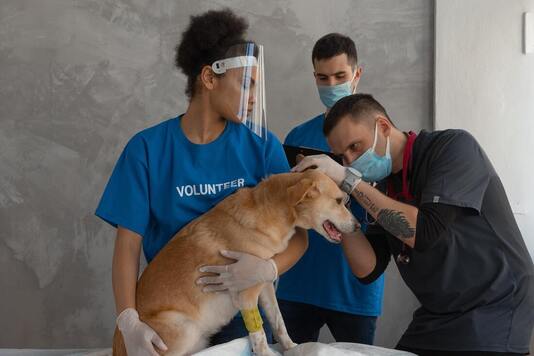
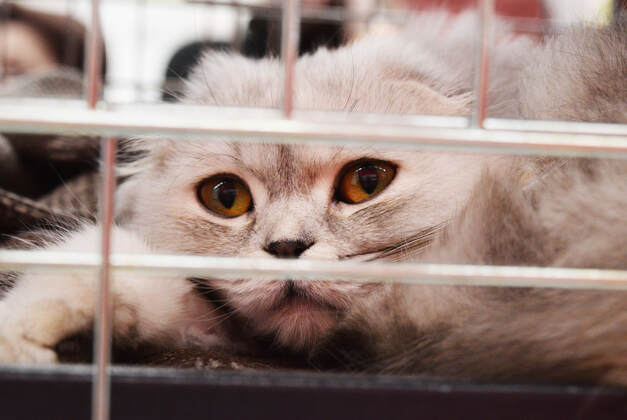



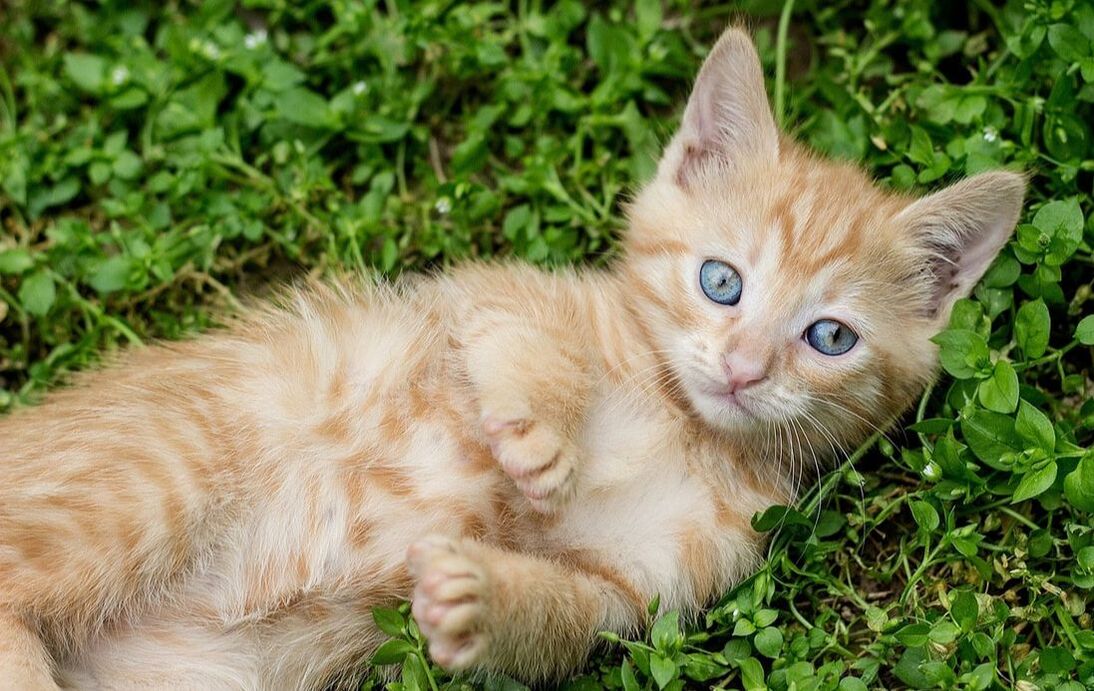
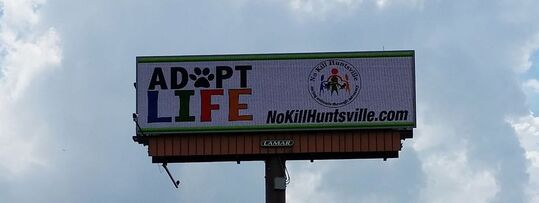

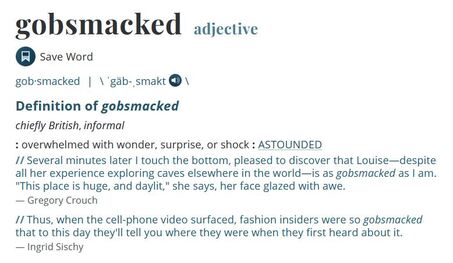
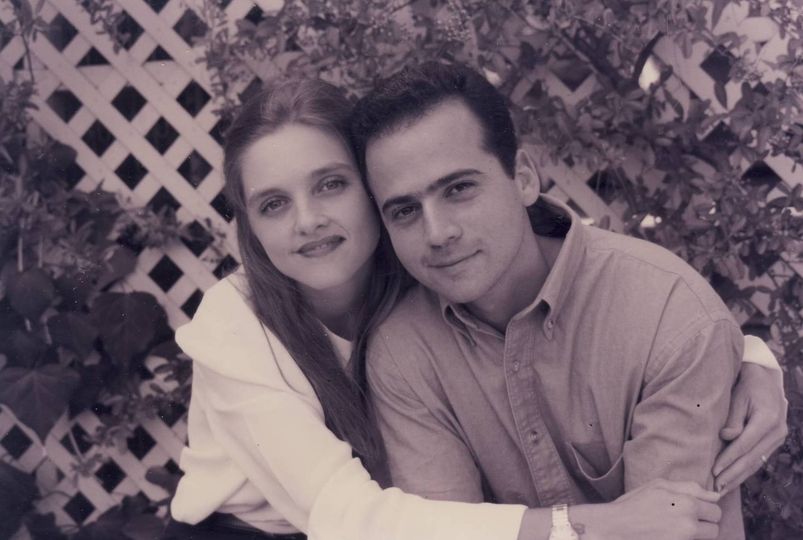
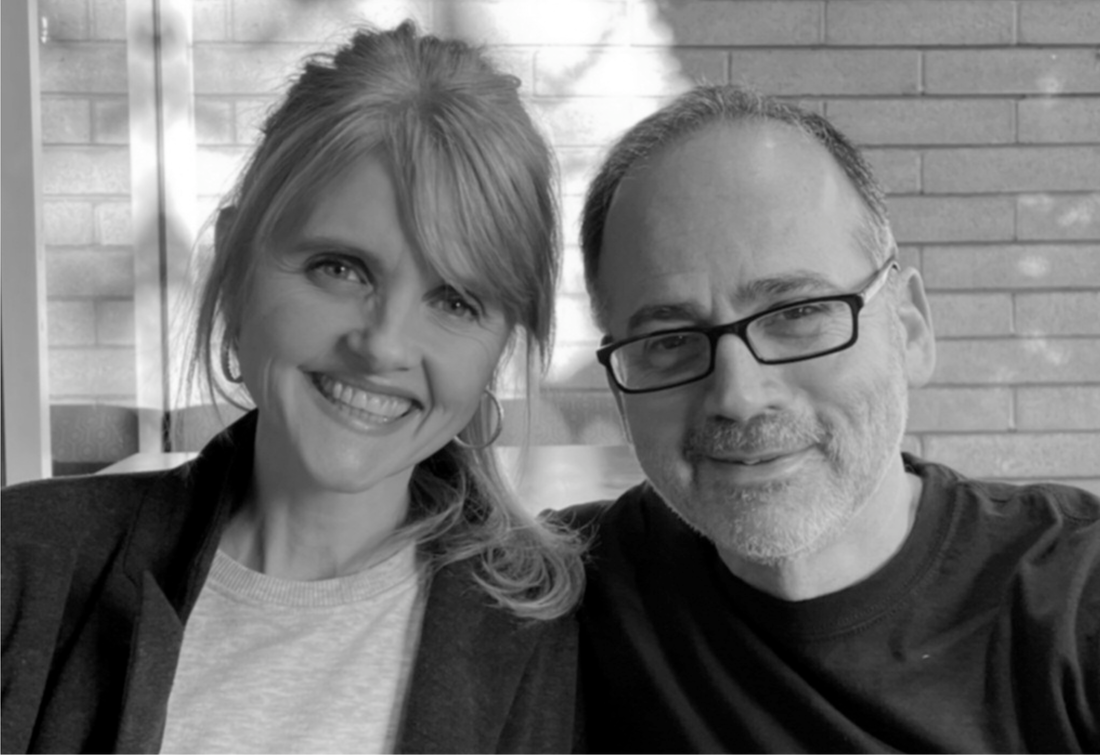

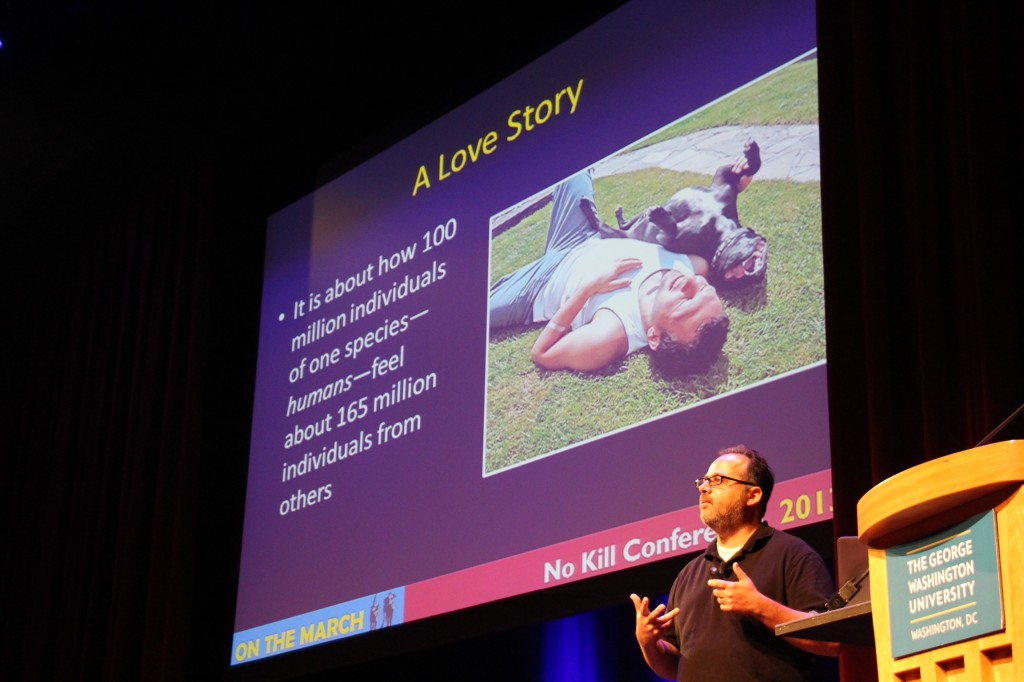
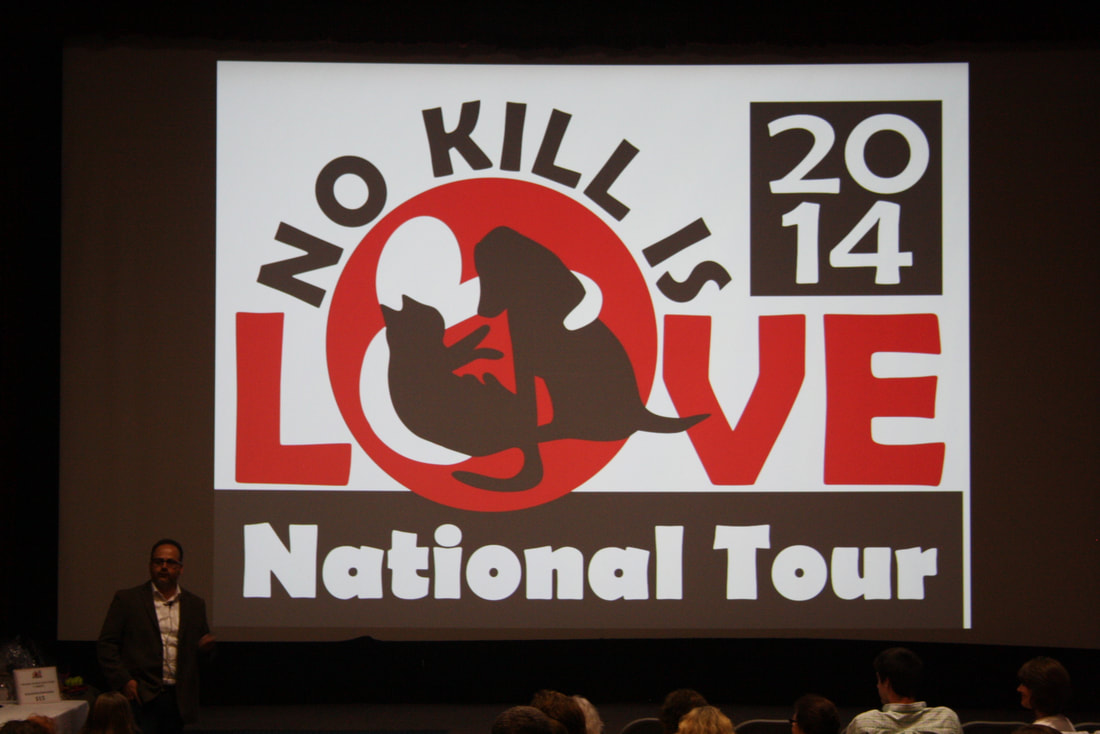
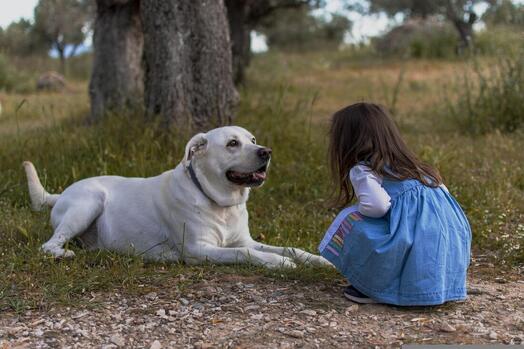
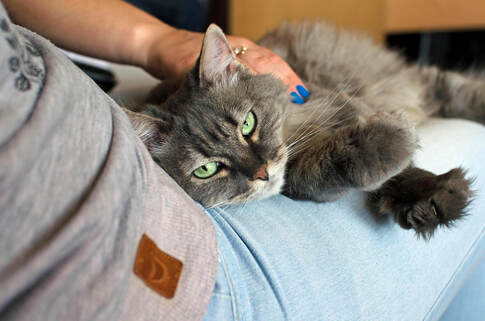

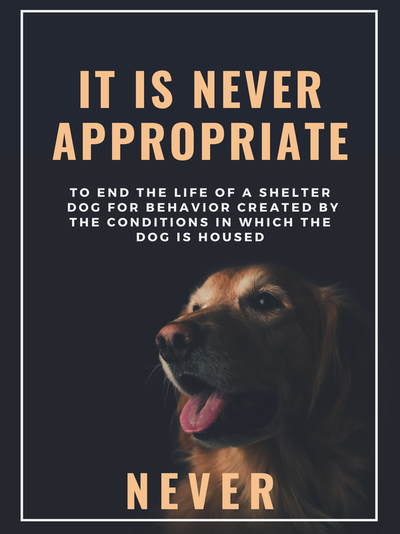






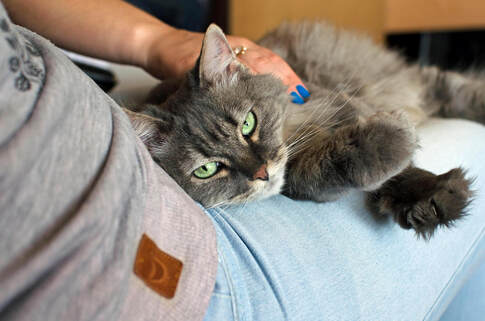
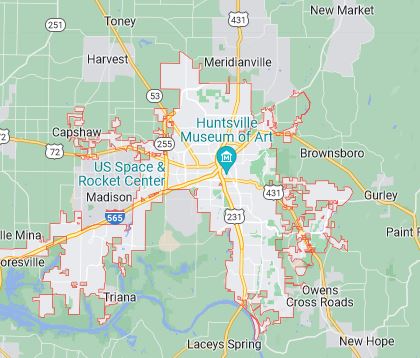
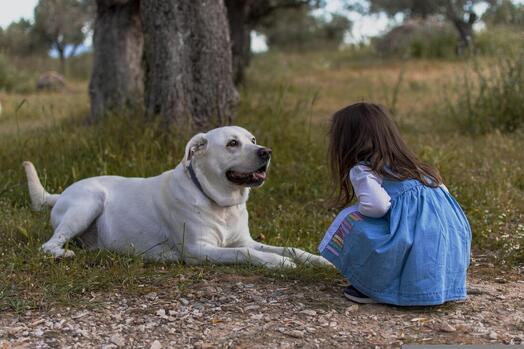
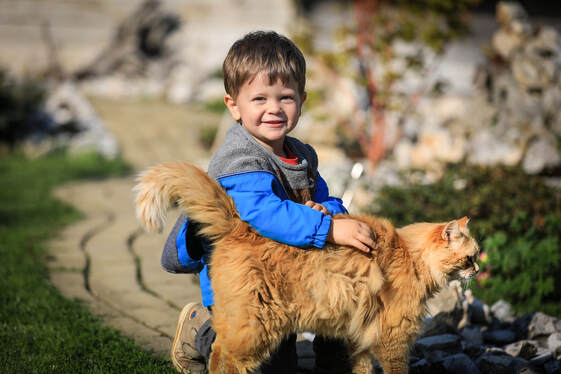






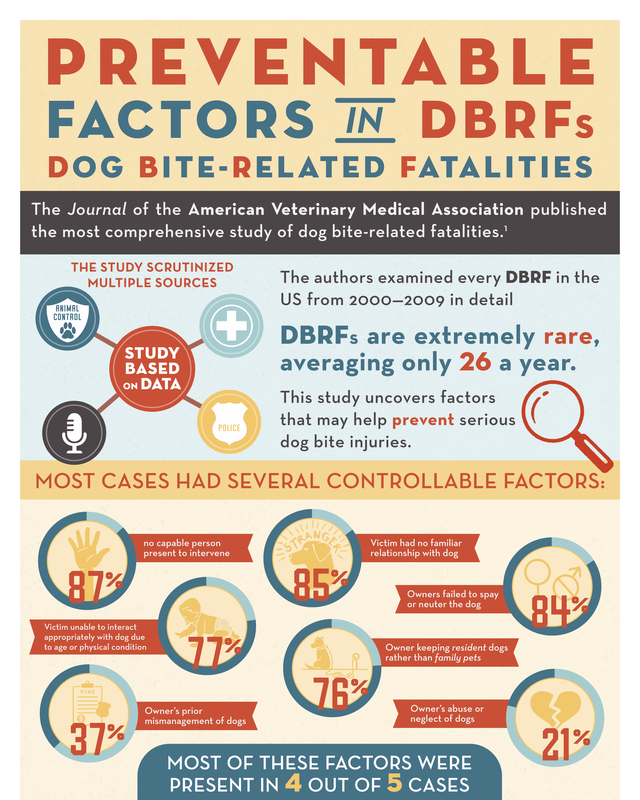
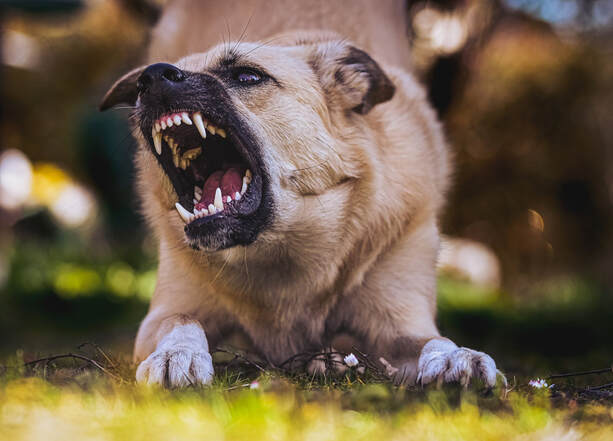



 RSS Feed
RSS Feed